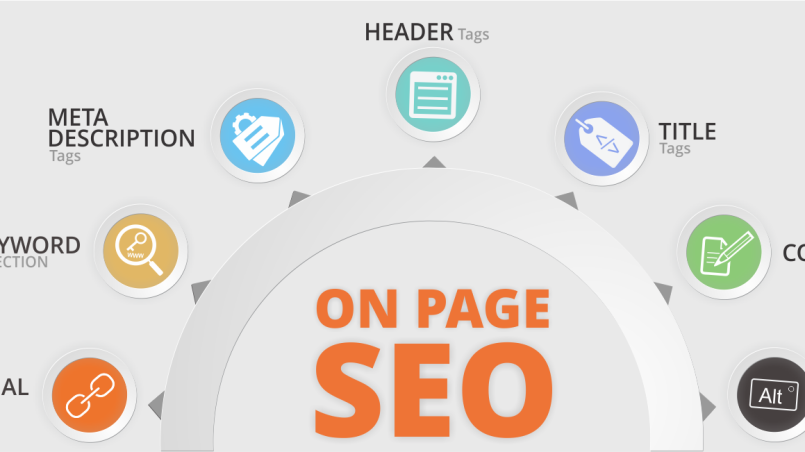Recent posts

nichemarket Advice
Why Video Production Companies Still Outshine AI
24 December 2025

Press Releases
Where You Can Find International Remote Jobs For South Africans
23 December 2025

Money Talks
Why Cross-Border Payments Are Slow, Tedious, and Expensive
17 December 2025

Money Talks
The Rise Of Trading Platforms In South Africa
16 December 2025
Popular posts
Extravaganza
Trending Music Hashtags To Get Your Posts Noticed
24 August 2018
Geek Chic
How To Fix iPhone/iPad Only Charging In Certain Positions
05 July 2020
Extravaganza
Trending Wedding Hashtags To Get Your Posts Noticed
18 September 2018
Money Talks
How To Find Coupons & Vouchers Online In South Africa
28 March 2019
12 On Page SEO Techniques To Master
01 December 2016 | 0 comments | Posted by Che Kohler in nichemarket Advice
Browsing the internet has become second nature to many of us. Looking at lists of search results and visiting page after page to satisfy our search intents has become so initiate, it borders on an internal auto-pilot. Attracting the attention of these users search behaviour relies heavily on your on-page SEO efforts. On-Page SEO is probably one of the easiest places to optimise your website but is often the most neglected.
It's unfortunately not the most glamorous task and it does take some graft which is no wonder some choose to give it a pass. Another's neglected task can easily become your gain. So let's dive into how you can set your site apart from competitors with On-page SEO.
What is On-page SEO?
On-page SEO is the practice of optimising individual web pages for better visibility and user experience in order to rank higher and earn more relevant traffic in search engines. On-page deals with both the text content and HTML source code of a page which can be optimised. On-page SEO is the crafting everything the user can and is most likely to see in order to convince them that this web page is a superior offering in satisfying their specific query.
What skills do I need for On-Page SEO?
Regardless of the framework, the site is built on, the CMS that manages the site or the hosting of the pages these skills would be universal. Once you have basic knowledge of the following, you can begin to optimise your pages for better organic results You will need to master:
- HTML
- CSS
- Javascript
- Content writing
- Keyword research and mapping
Once you have attained these skills you may use our 12 step program to build pages that beautiful and robust. Pages that search engine crawlers and users would like to get to know regularly on a more intimate basis. Ooh-la-la
On-Page Search Engine Optimization Techniques
- URL structure
- Make sure your URLs are clean, can easily be remembered, URUs should be kept short and relevant.
- Try to include keywords that match the subject matter, without keyword stuffing.
- Where applicable make sure URLs housed in a subfolder of your choice.
- Use hyphens to separate your URL strings and avoid stop words like "and" and "to" in URL.
- Page title
- Use A high Volume keyword as close to the beginning of the title as possible
- Limit to 60 characters on desktop
- If you serve one page for both mobile and desktop limit character usage to 55
- Include your website brand name in your page title at the end
- Begin each new word with a capital letter
- Meta Description
- Use A high volume keyword or two without keyword stuffing as far possible
- Limit to 160 characters on desktop
- If you serve one page for both mobile and desktop limit character usage to 155
- Include a call to action in your meta description
- H Tags
- Use single H1 (Main Heading) tag and include a high volume keyword
- Use of Focus keyword in H2 or H3 tags
- Style your H tags to be distinct from your bold and strong tags
- Do not strong your H tags
- Images
- Upload and save image file with a descriptive title
- If the image is hyperlinked, include a title description
- Include an on page caption
- Make use of alt text and include a keyword
- Limit sizes of images above the fold as not to push down content too far
- Compress images so they don't affect page load times
- Schema markups
- Select a type of schema mark up and use it consistently be it microdata or
json -ld - Test your markups regularly especially if the variables are dynamic
- Select the schema you feel will dive the best CTR
- Select a type of schema mark up and use it consistently be it microdata or
- Breadcrumbs
- Make sure they're consistent with the site IA
- Mark up breadcrumbs using schema
- Display breadcrumbs on desktop and mobile
- Can be manual or dynamically generated
- Include on all relevant pages
- Anchor tags
- Use a descriptive keyword as your anchor
- Include a long tail keyword in your link title tag
- Include a rel
nofollow tag for certain offsite links - Limit anchor links to 100 per page
- Open external links into a new window
- Social Media Prompts
- Use strong call to action for sharing content
- Include all major social networks
- Provide options for smaller networks
- Floating social sharing buttons perform better than static
- Keywords
- Group keyword according to page theme
- Assign keywords for page title, meta description, H tags, anchor text, image alt text and of course the main content paragraphs
- Avoid keyword stuffing
- Content
- Include content above the fold
- Make sure your content is a superior offering to those of your competitor
- Reference sources of information used
- Include long tail keywords in your content
- Work with around 500 words as a minimum for content
- Longer content pieces 1000 words plus tend to perform better
- HTML Mark-Ups
- Use ol or ul tags for lists
- Use the table tag to display comparative data
- Strong tag your long tail keywords
- Use the blockquote for quotes
- Include a descriptive statement or question before your marked-up data to provide added context
On page on point
Now that you have the 12 building blocks of on-page SEO we hope you use them as your foundation. Use these newly acquired tools and keep them close by. Use them to create not only quality content, but great pages that users will enjoy reading. Content like a meal is all about presentation, so if you want users to devour your content dishes, plate it up beautifully for them to enjoy. You will not only see an increase in return visits but recommendations from old visitors to bring new ones to your site without you lifting an additional finger, now isn't that just simply capital.
Contact us
If you want to know more about on page SEO don’t be shy we’re happy to assist. Simply contact us here
You might also like
The Rise Of Trading Platforms In South Africa
16 December 2025
Posted by Gabriela Pelayes in Money Talks
Discover how the rise of digital trading platforms in South Africa is reshaping commodity markets, boosting accessibility, efficiency, and the future...
Read moreWhere You Can Find International Remote Jobs For South Africans
23 December 2025
Posted by Mia Stewart in Press Releases
Want to find international remote jobs for South Africans? Look no further, in this breakdown we look at your options so you can start applying for W...
Read more{{comment.sUserName}}
{{comment.iDayLastEdit}} day ago
{{comment.iDayLastEdit}} days ago
 {{blogcategory.sCategoryName}}
{{blogcategory.sCategoryName}}
